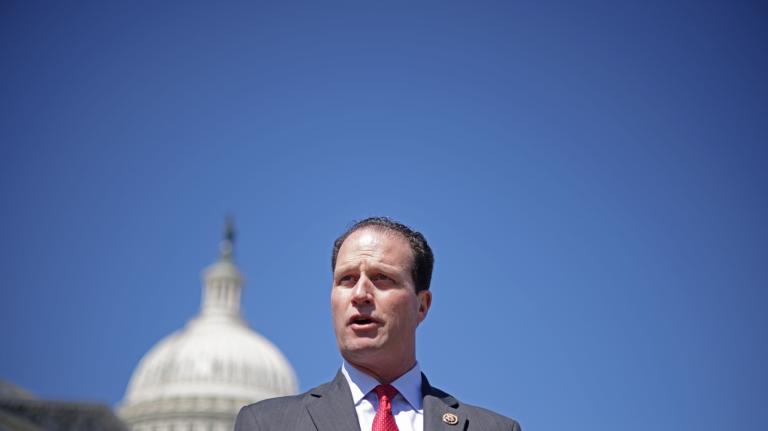 Water, water everywhere, but is it on the brink? Not if oceanographer Sylvia Earle has anything to do with it. Dearests, meet Ms. Earle, an aquanaut, author, and one of today’s greatest advocates of the ocean—also, I suspect, a direct descendant of Poseidon. (I’ve asked for funding from Grist for a DNA test to be sure. Stay tuned.)
Water, water everywhere, but is it on the brink? Not if oceanographer Sylvia Earle has anything to do with it. Dearests, meet Ms. Earle, an aquanaut, author, and one of today’s greatest advocates of the ocean—also, I suspect, a direct descendant of Poseidon. (I’ve asked for funding from Grist for a DNA test to be sure. Stay tuned.)
As the head of the National Oceanic Atmospheric Administration in the early ’90s, her fierce protection of the blue part of the planet landed her the title Sturgeon General. She’s also a female Buzz Aldrin of sorts (minus the Dancing with the Stars appearance), having gone deeper in the ocean than any woman in history; she walked untethered on the ocean floor. One giant, wet leap for womankind and the reason The New Yorker deemed Earle Her Deepness.
At 75, as the Explorer in Residence for National Geographic (Coolest. Title. Ever.), she is tirelessly speaking up for the seas.
Earle came up for air to chat with me at the Environmental Film Festival in Washington, D.C. Her Deepness was there to help promote a film made by the Natural Resources Defense Council about the problems of ocean acidification from carbon dioxide called Acid Test.
Q. If you had an elevator ride to tell someone about the state of the oceans, what would your pitch be?
A. Everybody should care about the ocean. Just imagine Earth without one. We’d have a planet a lot like Mars. No ocean; no life. No blue; no green. A lot of people are really concerned about what’s happening to the green—to terrestrial life. But everybody needs to understand that all life depends on the existence of the ocean. The ocean shapes climate; 97 percent of the water on earth is in the ocean. It’s where the greatest diversity and abundance of life is. That’s no surprise, given that all life requires water. And where is the water? It’s in the ocean. That’s where the action is.
There was a feeling going back up until about half a century ago when people still thought that the ocean was so vast, so resilient, that it didn’t matter what we put into it or what we took out of it—that the ocean could somehow recover. Somehow the belief was that our job was to extract from the ocean wildlife with no limits. Now we know that there are limits to what we can take from the ocean and get away with.
Q. What do you see as the greatest human threats to the ocean currently?
A. All things considered, I think that the biggest problem comes down to complacency born of ignorance, of people simply not knowing, of still believing somehow that the ocean is big enough, vast enough, to be able to recover no matter what we put in and take out. Everything that we care about is connected to the ocean. It doesn’t matter where on the planet you live; your life depends on the existence of the ocean—and not just rocks and water but a living ocean, a healthy ocean, an intact ocean where the integrity of systems is stable. We have destabilized the ocean systems. Our complacency is the worst problem because if you don’t know, you can’t care. Ignorance is the basis of being complacent. Once you know, once you understand, you’re burdened with that knowledge. I can’t eat fish anymore, or any sea food, because I know too much. I know the consequences not only to the ocean and the health of the ocean, but also how that comes back to affect me personally.
Q. I saw an ad today for Burger King. They have a fish sandwich for, like, $2.99. What’s the real cost of that fish sandwich? How does that relate to sustainable seafood, and is there even such a thing?
A. Well think about a fish sandwich. Do you go to a burger place and get a mammal burger? Do you get Kentucky Fried Bird? People will take and accept a “fish sandwich,” not having a clue about what kind of fish it is. Now I could go along with it being farmed responsibly—farmed catfish or tilapia—creatures that are as low on the food chain as chickens. It takes about two pounds of plants to make a pound of 1-year-old or less catfish or tilapia. It’s about the same as it is for chickens. For cows, it’s about 20 pounds of plants to make a pound of cow. To make a pound of tuna, think thousands of pounds of plants, or tens of thousands of pounds of plants, or even a hundred thousand pounds of plants going through this long and twisted food chain. An orange roughy takes 30 years, and yet they sell on the market for $8.99 a pound in my local supermarket in Oakland, Calif. That doesn’t begin to pay the real cost.
And actually these creatures are priceless. We don’t know how to make them. We don’t farm them. We’re taking wildlife out of the sea. And even those creatures that now are being “farmed” such as salmon and a few other species, mostly we take wildlife out of the sea in large quantities to get small quantities of farmed fish or other creatures that we’re growing. It doesn’t make a lot of sense. It certainly doesn’t make dollars and cents if we put a value on wildlife in the sea.
Q. I have read that if we don’t do anything we may have very few fish left by 2043. Can you talk a bit about that?
A. A few years ago, I was visiting in Australia. It was just after a report came out that 90 percent of many of the commercially extracted species from the sea were gone—gone in a few decades, since the 1950s. Taken. Extracted. What did we do with them? We ate them. We caught them, and we killed them; and we disrupted the ecosystems from which they were extracted, using trawls that take not just the fish but the whole system. They take the equivalent of bulldozing the forest to get a handful of songbirds. That’s the way we have fished—destructively.
Q. Can you tell us about The Great Garbage Patch and what people can do to help?
A. I’m asked sometimes, “How bad is the problem of The Great Pacific Garbage Patch?” And I have to say, it’s not just the great Pacific that’s in trouble; it’s the ocean, all of it, that is in trouble—from the debris, the plastics, and the other stuff that we’re putting into the ocean. A lot of it we can’t see because it’s chemical waste or carbon dioxide that’s causing pollution. It’s hard to escape plastics in our lives these days. But one thing every person should try to avoid is the one-time-use plastic. There was an illusion that you could have biodegradable plastics, but plastics generally don’t just disappear. They get into smaller and smaller and smaller pieces—so small that they’re now being consumed by planktonic creatures.
Q. What’s one thing you can recommend that people do to help the oceans?
A. I appeared on The Colbert Report, and we began a little conversation about this. Colbert being Colbert said, “Well if I can’t eat fish anymore, how am I going to get my mercury?” Another good issue to question whether you should continue to eat ocean wildlife. If you do, know what you’re eating, know where it came from, know what it’s name is—not a mindless chunk of fish in a fish sandwich or “catch o’ the day.” It could be any of 20,000 different kinds of vertebrate creatures. We don’t do that with birds or mammals. You kind of know when you’re eating lamb or chicken or beef—mostly. There may be some mystery meat circulating out there, but, with fish, it’s all mystery meat
And then the so-called vegetarians that say, “Oh, I don’t eat meat; I just eat fish.” If I were a fish, I would be outraged at that comment. I mean, “I’m meat too,” I would say.
Watch the full interview with Sylvia Earle:



